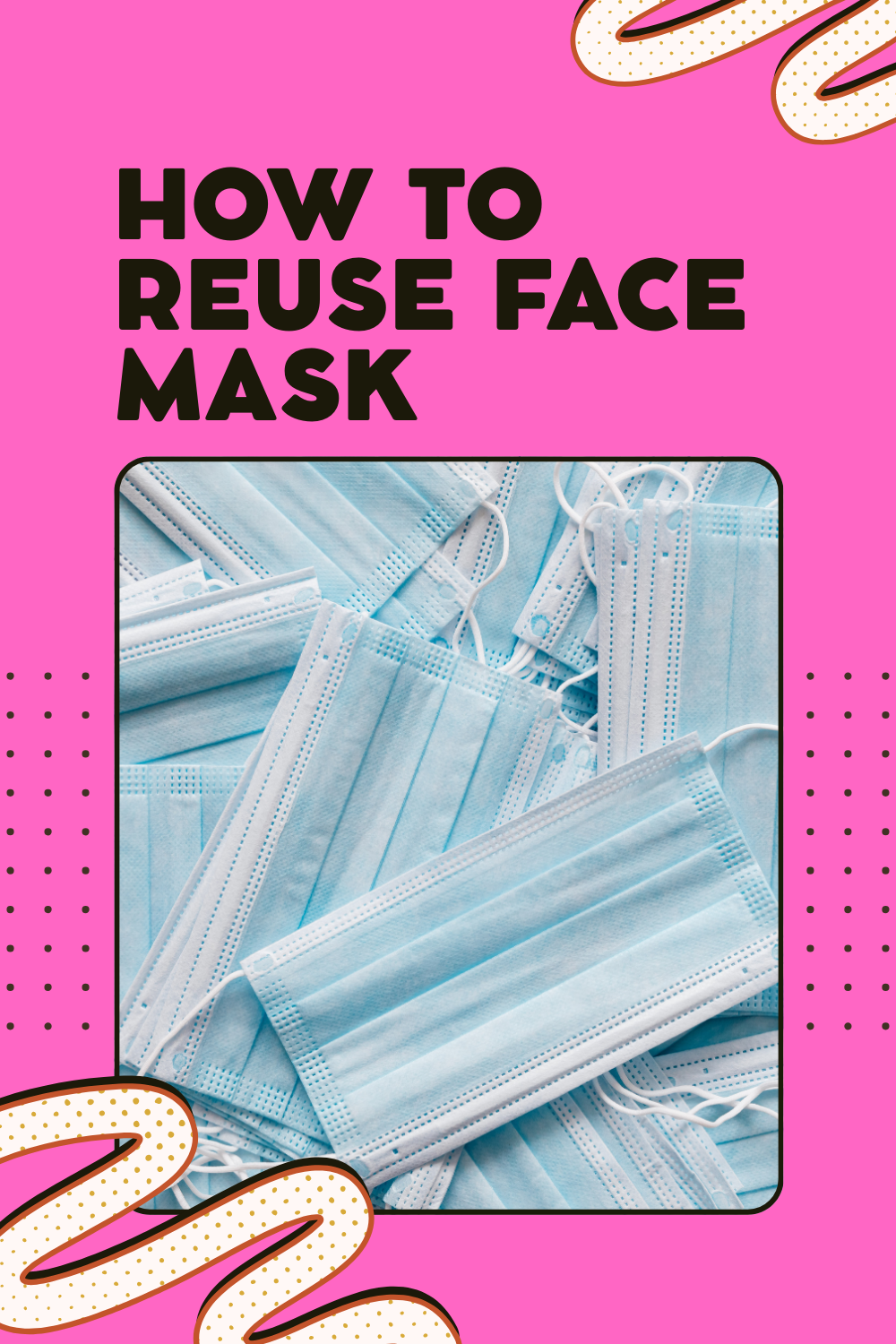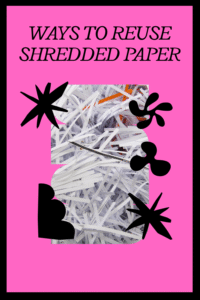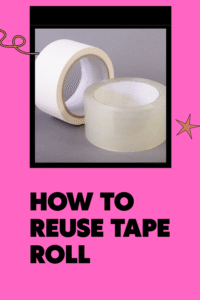Face masks have become a staple in our lives, whether for personal protection, health, or simply as a fashion accessory.
With their widespread use, it’s no surprise that millions of face masks are being disposed of every day, leading to mounting waste and environmental concerns.
But what if there was a way to reuse them? In this blog post, we’ll explore creative and practical ways to reuse face masks, making them more sustainable while ensuring they remain effective.
We’ve all been there picking up a face mask from the store, wearing it for the day, and tossing it away after a single use.
But, can we reuse face masks without compromising their effectiveness? That’s the burning question we’ll address today. Reusing face masks is not just an eco-friendly solution, but it also helps reduce unnecessary waste.
Table: Mask Types
| Mask Type | Recommended Reuse Time | Cleaning Method |
| Cloth Masks | Up to 5 uses | Wash with hot water (60°C or higher) and detergent. Dry completely before reuse. |
| Surgical Masks (Disposable) | 1-2 uses | Not recommended for reuse; only reuse if absolutely necessary. Disinfect by hanging in direct sunlight for 1-2 hours between uses. |
| N95 Masks | 3-4 uses | Sanitize by leaving the mask in direct sunlight or using a UV-C sterilizer. |
| Fabric Masks with Filter | Up to 5 uses | Wash with soap and water. Ensure the filter is replaced every 3 uses. |
Can You Safely Reuse a Face Mask?
When we talk about reusing face masks, the first thing that comes to mind is safety. Many people might feel uneasy about reusing a mask they’ve already worn, and for good reason.
A used mask could contain bacteria, viruses, or germs that pose a health risk. However, there are ways to clean and sanitize your masks that make them safe to reuse.
Step 1: Cleaning and Disinfecting
The most common and effective way to reuse a mask is by properly cleaning it. If you’re using cloth masks, they can be washed easily in hot water (at least 60°C) with soap and disinfectant.
For surgical or disposable masks, reusing them may not always be safe because their material can degrade after a single use, but some precautions can help extend their use.
Here’s a simple guide to cleaning your cloth masks:
- Prepare a Wash: Use warm water and a detergent that can break down viruses and bacteria.
- Dry Thoroughly: After washing, dry the mask completely in the dryer or hang it in direct sunlight to kill any remaining germs.
- Check for Wear and Tear: Inspect the mask for any tears, worn-out elastics, or damaged fabric. If it’s compromised, it’s best to dispose of it.
Step 2: Proper Storage
After cleaning, ensure your mask is stored in a clean, dry, and sealed environment. A reusable ziplock bag or a clean box is ideal for storing your mask when you’re not using it. Remember to avoid cramming multiple masks into one storage space.
Step 3: Using for Limited Periods
If you must reuse a surgical mask, limit its usage. Ideally, you should use it for no more than 3 hours at a time and ensure it is dry and undamaged before re-wearing.
Creative Ways to Repurpose Old Masks
Reusing doesn’t always have to mean simply wearing the mask again. There are countless ways to repurpose your old face masks creatively. Here are some great ideas:
1. DIY Craft Projects
The fabric from old masks can be repurposed into various DIY projects, such as:
- Face Mask Bags: Use the fabric to make a small bag to hold personal items.
- Recycled Art: Cut the fabric into small pieces and use it for patchwork quilts or other creative art projects.
- Dog Toys: The soft and durable fabric is perfect for creating chew toys for pets.
2. Gardening
Old masks can also serve a functional purpose in the garden:
- Plant Ties: Use the straps to tie plants and secure them to supports.
- Weed Barriers: If you’re using cloth masks, their breathable fabric can help prevent weeds from growing in certain areas of your garden.
3. Donate or Repurpose for Charitable Causes
Some organizations or local health centers may accept gently used masks, especially cloth masks that can be cleaned and reused. This can be a great way to donate masks that are no longer suitable for personal use but still in good condition.
Mistakes to Avoid When Reusing Face Masks
As with anything, there are some mistakes that can undermine the effectiveness of reusing a face mask. Here are the most common mistakes to watch out for:
1. Not Washing Between Uses
One of the biggest mistakes people make is not washing their masks after each use. This can lead to the accumulation of germs and bacteria, which could potentially cause harm. Always ensure you clean your mask properly after each use.
2. Using a Worn-Out Mask
Another mistake is continuing to use a mask that has visibly worn out. If the mask has frayed edges, holes, or loose straps, it’s time to dispose of it.
3. Ignoring the Fabric Type
Not all masks are meant to be reused. Cloth masks are the most reusable, but surgical masks are often designed for single use only. Be aware of the type of mask you’re using and how it’s intended to be used.
4. Reusing Without Proper Drying
A damp mask is a breeding ground for bacteria and fungi. Ensure your mask is completely dry before reusing it. If it’s stored while still wet, it can develop a musty smell and harbor harmful microorganisms.
How to Properly Dispose of Masks When They’re No Longer Usable
While reusing masks is an excellent way to reduce waste, there will come a time when your mask is no longer usable. When that happens, proper disposal is essential.
Step 1: Discard Used Masks Properly
Disposable face masks should be placed in a trash can with a lid. Make sure the mask is inside a plastic bag before disposal to prevent contamination.
Step 2: Avoid Littering
Never throw used face masks on the ground or in public spaces. Besides being unsightly, it can lead to environmental pollution, especially since face masks are non-biodegradable.
Step 3: Educate Others
Encourage those around you to dispose of their masks correctly and not to litter. The more people are aware of the importance of proper disposal, the better for our environment.
Conclusion: Embrace Sustainability in Mask Usage
Reusing face masks is a practical and sustainable solution that not only helps reduce waste but also saves money.
cleaning and disinfecting to repurposing masks for other uses, there are several ways to get more life out of your face mask.
However, always remember to prioritize safety and hygiene. If a mask is no longer functional or has worn out, it’s best to dispose of it properly.
By incorporating these practices into your daily routine, you can reduce your environmental impact and make the world a little greener.
Key Takeaways:
- Clean your masks thoroughly between uses to maintain hygiene.
- Repurpose old face masks for creative DIY projects or gardening.
- Avoid common mistakes such as using worn-out masks or not drying them properly.
- Properly dispose of masks when they are no longer usable.
Next time you find yourself ready to toss out a mask, think twice! Reuse it or repurpose it creatively. Have you tried reusing your face masks? Share your ideas in the comments below, or pass this article along to someone who could benefit from it.
FAQ:
Q: Can I reuse surgical masks?
A: While it’s not recommended to reuse surgical masks, you can extend their life for a short period by carefully disinfecting and storing them properly. However, make sure the mask isn’t damaged or soiled.
Q: How often should I wash my cloth mask?
A: It’s best to wash your cloth mask after every use. Make sure to wash it with hot water and soap to ensure it’s properly disinfected.
Q: Can I repurpose face masks for anything else?
A: Yes, you can repurpose face masks for various DIY projects like making bags, pet toys, or even plant ties for gardening.
Q: How can I store a reusable mask?
A: Always store your mask in a clean, dry place, such as a ziplock bag or a small box, to ensure it stays sanitized.




